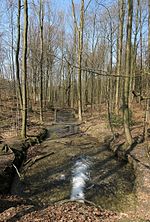Stadtgymnasium Detmold
1830 establishments in GermanyDetmoldEducational institutions established in 1830Gymnasiums in GermanySchools in North Rhine-Westphalia

Stadtgymnasium Detmold is a Gymnasium (grammar school) in Detmold in the German state of North Rhine-Westphalia. Founded in 1830, Stadtgymnasium Detmold is the second oldest Gymnasium in Detmold.
Excerpt from the Wikipedia article Stadtgymnasium Detmold (License: CC BY-SA 3.0, Authors, Images).Stadtgymnasium Detmold
Martin-Luther-Straße,
Geographical coordinates (GPS) Address Nearby Places Show on map
Geographical coordinates (GPS)
| Latitude | Longitude |
|---|---|
| N 51.9344 ° | E 8.8606 ° |
Address
Martin-Luther-Straße
32756 , Detmold-Süd
North Rhine-Westphalia, Germany
Open on Google Maps










